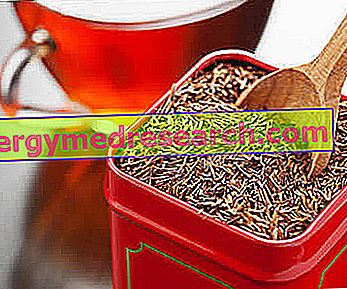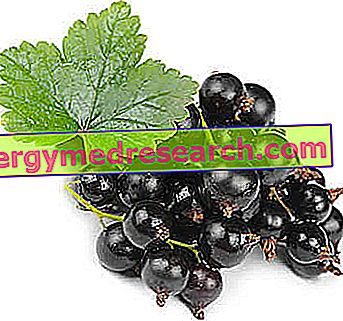Pneumonia
Pneumonia is an inflammatory disease of the lungs, which affects the pulmonary alveoli (anatomical structures responsible for gas exchange).
Pneumonia is usually caused by viral or bacterial infections (especially Streptococcus pneumoniae ); less commonly depends on other microorganisms, some drugs or other conditions.

The treatment of pneumonia is chosen based on the aetiological agent recognized with the diagnosis. In the case of bacterial infection, the elite therapy is an antibiotic type.
Pneumonia mortality has almost been canceled with the invention of the specific vaccine; however, when it arises as a secondary complication or comorbidity, it is still a disease that can cause death in the elderly.
Food Causes of Pneumonia
There is food-borne pneumonia, or "pneumonia ab ingestis".
Contrary to what happens for most of the infectious diseases that include the diet among the risk factors, in the ab ingestis pneumonia the food does NOT contain a pathogenic charge greater than normal; on the contrary, in some cases, ab ingestis pneumonia does NOT involve the contamination of the lung tissue.
In these very particular forms of pneumonia, also called "aspiration", the diet is responsible for the entry of food or gastric material into the bronchial tree (food or stomach contents).
Depending on the composition of the aspirated material, they can develop:
- Infectious pneumonia
- Chemical or caustic pneumonia
- Chemical or caustic pneumonia with infectious overlap.
The diet can cause pneumonia in the following cases:
- Acid regurgitation in sleep or sedation (eg anesthesia, collapse from alcohol or drug use etc.)
- Complications of enteral nutrition, ie with the gastric nose tube
- Severe dysphagia, caused by achalasia (a hypermotility disorder of the neurological type esophagus)
- Gastroesophageal reflux and nocturnal regurgitation (hypomotility disease of the esophagus).
Ab ingestis pneumonia therapy is first of all dedicated to preventing the passage of food or gastric material into the pulmonary tree.
While regurgitation in the event of sedation or error in the placement of the tube are operator-dependent complications, the food aspiration caused by dysphagia can be avoided with:
- Drug therapy (calcium channel blockers) for achalasia
- Drug therapy for gastroesophageal reflux
- The gastroesophageal reflux diet.
Pneumonia Diet
In the case of common pneumonia, a weight loss often occurs due to infection, hence fever, dehydration and inappetence.
First of all, it is essential that the pneumonia diet is pleasant and easily digestible, so that it can counteract the patient's loss of appetite.
In the presence of fever and sweating, especially if the food intake is compromised, the pneumonia diet must supply abundant quantities of water (both in food and in drinks).
As with the diet for flu or cold patients, pneumonia should also emphasize the supply of certain nutrients: among these: vitamin C, vitamin D, zinc, isoflavones, probiotics and prebiotics. Let's see them one at a time.
- Vitamin C (ascorbic acid): is the vitamin most involved in the fight against infections. It is a powerful antioxidant and, in the defense mechanism, it acts positively above all against viral infection.
Foods rich in ascorbic acid are of vegetable nature, especially vegetables and fruits: chilli, pepper, parsley, citrus fruits, kiwi, apples, lettuce, broccoli, pumpkin, etc.
NB . Vitamin C is thermolabile, which is why it is degraded by cooking.
- Vitamin D (calciferol): also involved in the fight against infectious diseases (viral, bacterial and fungal).
Its deficiency is correlated with a greater susceptibility to respiratory tract infections. This molecule is produced mainly in the skin, in the presence of UV rays; among foods, vitamin D is more present in fishery products and in eggs.
- Zinc: in some types of viral infections, supplementation with zinc has been shown to be useful in reducing overall illness time and symptom severity. This mineral is naturally present in foods of animal origin, especially: oysters, liver, milk and meat.
- Isoflavones: vegetable antioxidants typical of soya, vegetables and fruits. They fight the action of free radicals and support the immune system against certain infections (especially viral).
- Probiotics and prebiotics: there is a positive correlation between the trophism of the intestinal bacterial flora and the functioning of the immune system. For this reason, it is advisable to increase the nutritional share of probiotics (physiological bacterial flora) and of prebiotics (nutrition for physiological bacterial flora). From a practical point of view, it is necessary to: reduce refined sugars, reduce hydrogenated fats, increase fiber and whole foods, and use fermented foods ( rich in lactobacilli, bifidobacteria and eubacteria ).
The most well-known fermented foods are: yogurt, kefir, buttermilk, kimchi, miso, gherkins, sauerkraut, dietary foods and supplements / drugs.



